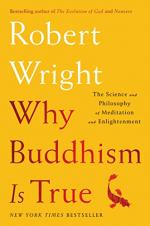
|
| Name: _________________________ | Period: ___________________ |
This quiz consists of 5 multiple choice and 5 short answer questions through Chapters 10-12.
Multiple Choice Questions
1. On what body process should first-timers focus when meditating?
(a) Phlegm.
(b) Blood.
(c) Breath.
(d) Bile.
2. How did the author feel when his meditation teacher told him that his frustration with meditation was a good sign?
(a) Patronized.
(b) Assured.
(c) Ashamed.
(d) Proud.
3. The author states that one must simply attempt to move toward not-self through performing what action?
(a) Creating.
(b) Meditating.
(c) Believing.
(d) Forgiving.
4. In the philosophical illustration focused on a charioteer and horses, what does the charioteer represent?
(a) The adrenal gland.
(b) The hypothalamus gland.
(c) The temporal lobe.
(d) The prefrontal cortex.
5. The author states that what elements are just tools to help the brain sort the importance of various thoughts?
(a) Feelings.
(b) Sounds.
(c) Modules.
(d) Senses.
Short Answer Questions
1. Which philosopher compared the relationship between feelings and the rational self to the relationship between horses and a charioteer?
2. What object does the author use as a metaphor for the feelings that connect one’s conscious mind and one’s thoughts?
3. What does the author NOT use as an example of the indirect evidence received by the human brain?
4. Which of the following feelings is the most often studied in connection with mental modules?
5. The author states that perception is what type of process?
|
This section contains 238 words (approx. 1 page at 300 words per page) |

|




